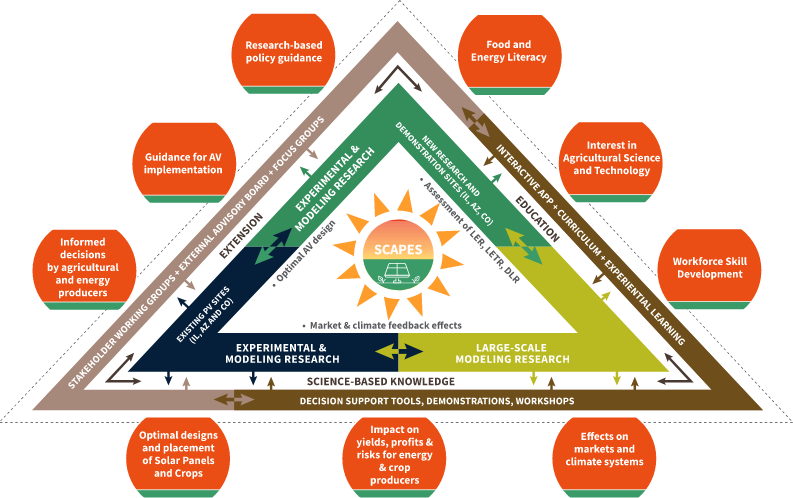Who we are
Led by the University of Illinois at Urbana-Champaign, we’re an interdisciplinary team of agriculture, economics, geography, biology, psychology, and engineering researchers. With sites in Illinois, Arizona, and Colorado, our work aims to boost renewable energy and the resiliency of food production—at the same time.
How we work
Cropland is one of the best places for solar energy generation. We conduct our research across a range of cropland environments, coordinating our activities with a large team of collaborators, technicians, and students. All while ensuring a safe, productive, sustainable environment for everyone.
Our teamHow farms benefit
Through our diverse research sites, we find that solar panels help protect crops from exposure in the midwest, while preserving soil moisture in the southwest, improving production. Plus, with solar companies’ need for land, farmers can diversify their income. The bottom line? With agrivoltaics, farmers can improve their yield, reduce water usage, and produce energy to use—or sell.
How the system works.
Ideally, ground-level solar panels are positioned to allow enough sunlight for the crops, which grow underneath. The panels help keep the soil moist, along with keeping the crops cool during the day and warm at night. In turn, the plants help the panels in transferring water from the soil into the atmosphere. The plants keep the panels cool—and efficient—during the day, producing more energy.

Agrivoltaics’ impact
As agrivoltaics innovators, SCAPES project researchers experience its impact first-hand. Agrivoltaics helps energy generation and crop production. It can help farmers profit. It provides new opportunities for the energy industry. It can guide U.S. policy. And it presents new fields of study and bright career paths for the next generation.

